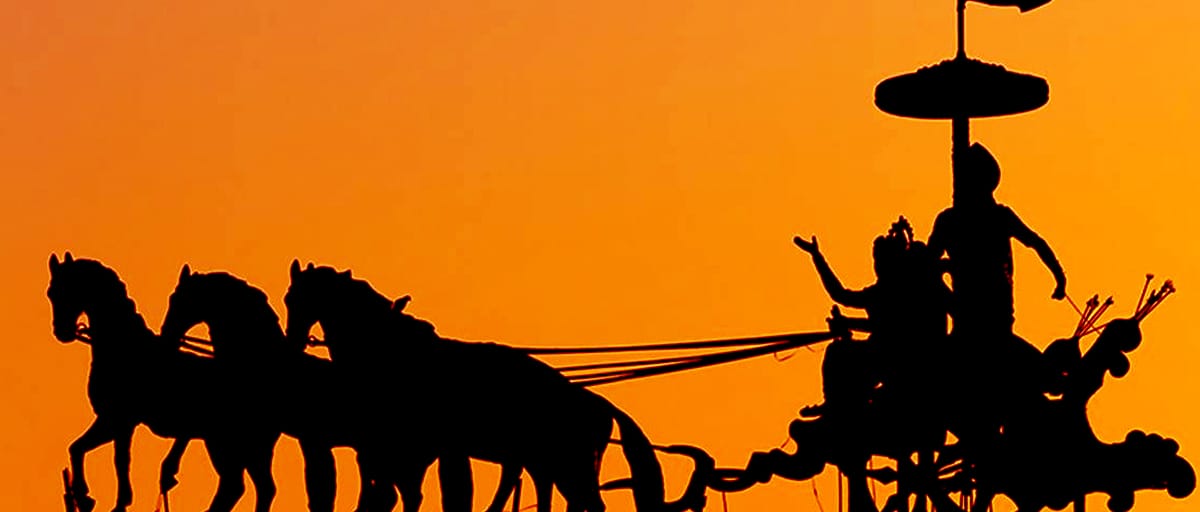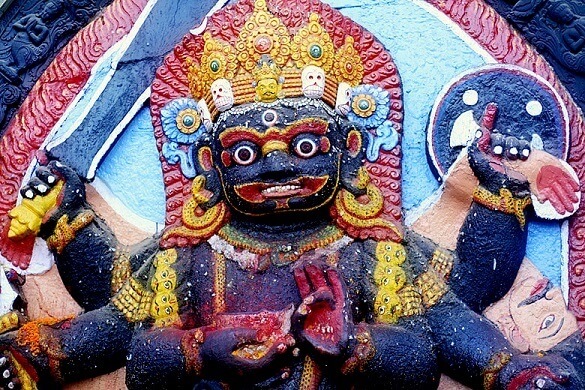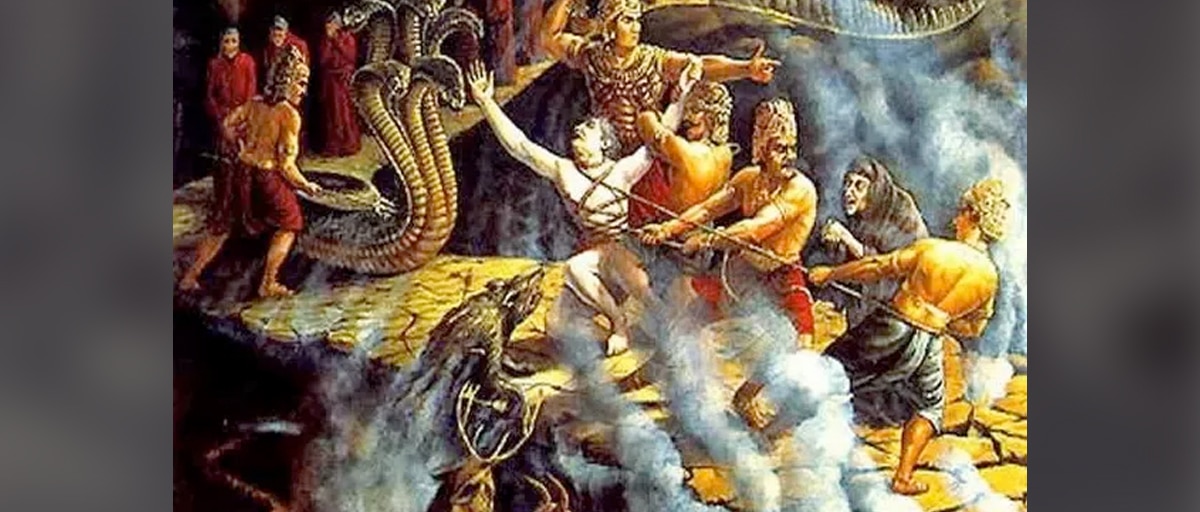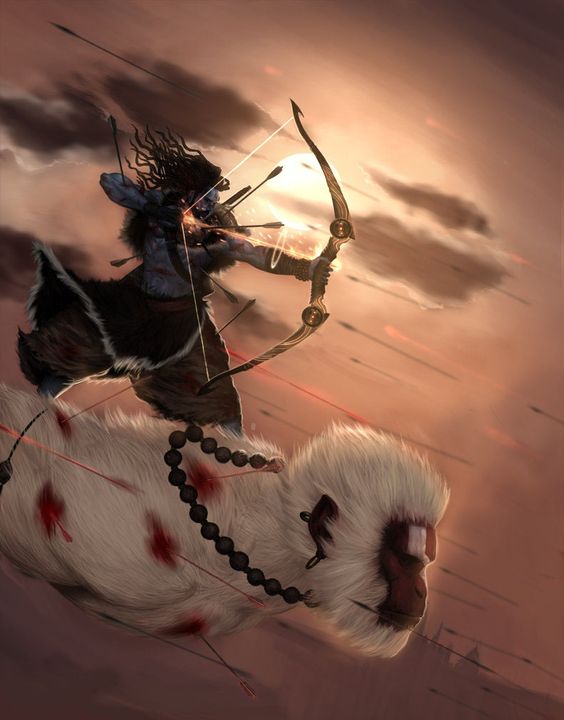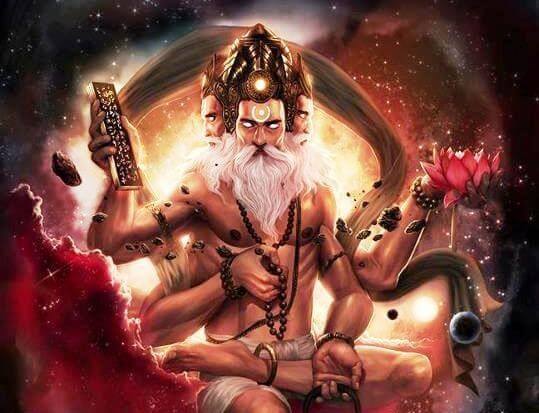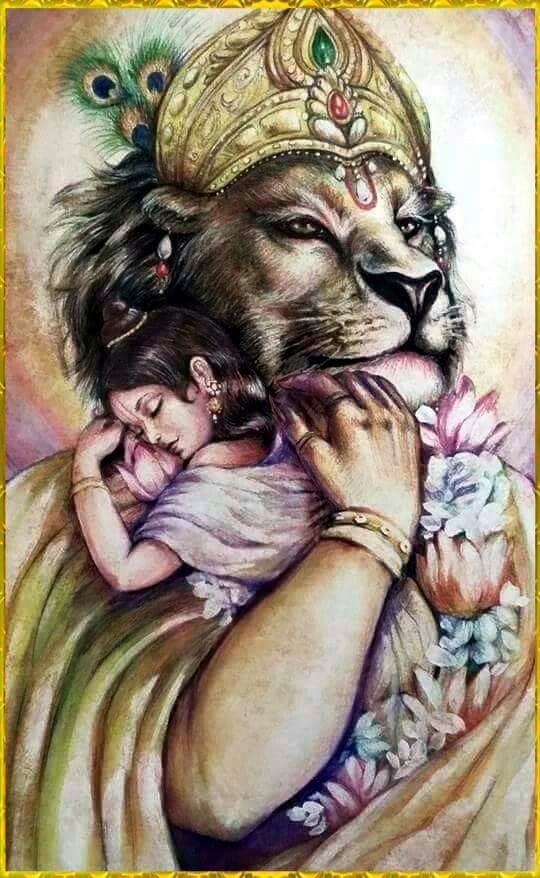Vishnu is one of the trimurti in Hinduism. Vishnu विष्णु is the preserver and protector of the universe. He protects the universe from being destroyed and keeps it going, according to this religion. Vishnu has 10 incarnations (Avatar अवतार)
He is considered to live in the city of Vaikuntha on Mt. Meru. The city which is made of gold and other jewels.
He is believed to be the all-pervading, omniscient, omnipresent god. So, Lord Vishnu is shown in blue color as he is infinite and immeasurable like the sky and surrounded by the infinite cosmic ocean. Sky, which seems to have no beginning or end, is in blue color.
